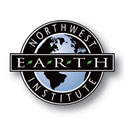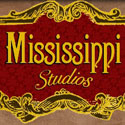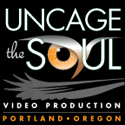BP Took Our Arms, The Government Is Taking Our Legs
We’re approaching the part of Louisaina where land and water become indistinct. South of New Orleans, approaching Grand Isle, we’re driving a series of elevated roadways and bridges, traversing a mammoth, venerable estuary the likes of which I’ve never seen. The likes of which I never knew existed. This area serves as a natural buffer between the Gulf and New Orleans, an ecosystem that not only provides vital habitat for waterfowl and other aquatic life, but a geography that protects the city itself from storms. It has been threatened by years of development of channels for commercial ship navigation that transect the estuary. And it’s always threatened by oil.
On the island proper, we’re meant to meet up with US Fish and Wildlife’s Search and Rescue. Unfortunately, our tour of the bay structure, where distressed, oiled birds are captured and then taken to a rehab center nearby, was not to be. We’re in the height of hurricane season now, and though we’re not looking at such a storm, we’re looking at a massive wall of gray just on the horizon and the official is telling us that the mission is officially standing down.
I ask the search and rescue team leader how bad the spill is, after he tells us he has worked on three other spills. “Monumental,” he says. I’m with a reporter from my hometown newspaper and he’s unsatisfied with the answer. He presses. The official speaks in gentle equivocations — it’s not his job to argue, it’s his job to get the media out to these places, to see what is the what and get the story to the public. Sure it’s controlled, but he doesn’t like a man whose tongue would be lashed. It is big and his body language says a lot. Monumental is a monumental word after all.
We take the opportunity to tour Grand Isle. I haven’t been here before but it looks like a middle class summer wonderland, a place where families fish and fight the the oppressive heat by bathing in the placid sea. I’m constantly texting pictures to a friend of mine who has a strong connection to the place, and I’m sad she’s not with us. It feels weird to translate this place myself, without her knowledge as a guide.
We eat lunch at the local eatery where a serious lunch rush is underway. Coast Guard, Louisaina officials, BP workers, and various boat captains all eat gumbo and fried oysters in relative peace. We sample boiled peanuts for the first time, and I’m not a fan. Standing in line, waiting for my sandwich, everyone gets along. But there is tension here. Tension because some of these people can’t talk to each other. They can’t tell each other what they know, or what they do. The subject on everyone’s mind is avoided it seems. But if there is one thing that the room lacks, it’s the levity that lunch usually brings.
Barrier islands make this area surfless which makes for perfect bathing. But the beaches are closed. The houses are mostly unoccupied, and many of them are still in disrepair from Katrina. Frisbees are getting dusty and beachballs are without air.
We walk the beach none the less — no one is here to tell us not to — the beach cleanup check point tents are empty and slightly akimbo. There are a few locals crabbing and fishing, but largely, the beach looks as empty as Coney Island in the wintertime. What’s astonishing is the lay of the beach — it’s nearly entirely uniform. It has been scrubbed by machines. It’s unnaturally level. This area had been entirely covered with oil not long ago. Every time it washes up, machines comes through and takes the top layer off and then hauls it away to where the oil and the sand is separated. I want to see this place. I want to see where they take this oily sand.
As the storm approaches, the locals on the beach say that the oil will come back, and the skim will happen again. And again. And again. This is a common theme when I speak to people here — almost anywhere. As an aside, last night I was in a bar in St. Bernard Parish, New Orleans, talking to a woman named Donna. St. Bernard Parish was the only total devastation zone in New Orleans — meaning everything flooded. Everything. Her house was under 17 feet of water only six weeks after she bought it. ”You learn to roll with the punches here, and you roll through, but it ain’t never gonna get back to normal.” She’s upbeat, but she looks beaten. Hardened by a hard life and hard times.
Life in this region has been in such trauma for so long. Pre- and post Katrina are the temporal boundaries by which people understand reality. The oil only makes things worse. Locals have come to expect the un-normal as the new dominant paradigm. Yes, life goes on. But it’s different. Spills and storms, this is the sense of place these people know. There is no other life here. It feels like a strange pathology. It makes me sad. For better or for worse, the oil industry isn’t going away and no one even thinks about that as a possibility. Things don’t change here, but the landscape varies in degree of toxicity. Walking here, seeing oil at the tide line mixed with dispersant, I too believe that this will never, ever go away. A storm will bring it up. A current will make it known again. It’s an unsettling feeling. But one thing is certain: no one believes what the government and BP are saying, “it’s going away rapidly.”


























NO COMMENT
Leave a comment